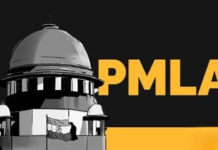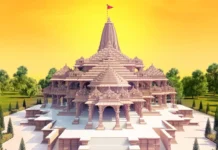Bullet Train In India Project Cost, Starting Date, Route, Speed, Ticket Fare, Distance, Timing: Taking India’s first bullet train nearer to reality, work on the Mumbai-Ahmedabad project will begin soon. It is the first time Japan’s legendary “Shinkansen” bullet train technology is being exported. The first agreement on the bullet train project was signed between India and Japan during Abe’s earlier visit to India in December 2015. The foundation ceremony of the project will be laid by Prime Minister Narendra Modi and Abe near Ahmedabad on September 13.
PM Modi has said the bullet train offered to India by Japan is almost free of cost. A 50-year yen loan amounting to Rs 88,000 crore at 0.1 % interest is being described by the prime minister as free of cost. This is patently absurd.
Here’s All Details About The High-Speed Bullet Train Project-
1. What Will Be The Route For The Bullet Train?
The bullet train will stop at 10 stations, which are Thane, Virar, Boisar, Vapi, Bilimora, Surat, Bharuch, Vadodara, Anand, and Sabarmati. A 21-km-long tunnel will be dug between Boisar and Bandra Kurla Complex in Mumbai, with seven km of the stretch under the sea.
2. What Will Be The Speed Of The Bullet Train?
The expected speed at which the trains will run is 320 km per hour, trains can run at a top speed of 350 km per hour. It will cover the distance between Mumbai and Ahmedabad in 2 hours and 58 minutes if it halts at 10 stations. The traveling time, however, will come down to hardly two hours if the train halts at only two stations.
3. What Will Be The Ticket Fare For Bullet Train?
According to Railway officials, the bullet trains would have two categories of seats, executive seat and economy seat, and the ticket fares will be like that of AC-2 tier fare for Rajdhani Express.
The costs of tickets are supposed to be 1.5 times that of the air-conditioned First AC and may be in the vary of Rs 2,700-3,000. Moreover, Initially, 10-coach trains with a capacity of 750 passengers will be operated, which will eventually be replaced by 16-coach trains that can carry 1,200 passengers.
4. How Much Does The Bullet Train Project Cost?
The ambitious Ahmedabad-Mumbai high-speed bullet train venture will price about Rs 1.08 lakh crore or USD 17 billion. It would cost about ₹980 billion (US$15 billion) and be financed by a low-interest loan from Japan.
The preliminary disbursal of $1 billion will be used to give settlement for land, set up a training institution in Ahmedabad and for some construction-related works. The project is expected to be completed by 2022.
5. How Many Bullet Trains Will Run On The Route?
The Railways will work 35 bullet trains but the number will expand to 105 by 2053. A bullet train needs four hours of cleaning after a run of 20 hours.
The Shinkansen uses 1,435 mm standard gauge tracks in comparison to the 1,067 mm narrow gauge. The Shinkansen uses an automatic train control system, therefore, doing away with the need for trackside signals. Trains running on Shinkansen network are extremely prompt and have an impeccable safety record.
6. How Much Distance Will The Bullet Train Cover?
The Railways will need an estimated 825 hectare of land for the high-speed bullet train that will cover a distance of 508 km. Virtually 92 percent of this route will be increased, six percent will go through tunnels and the remaining two percent will on land.
Japan International Cooperation Agency and the Railway Ministry have inked a Memorandum of Understanding for the 508-km bullet train corridor.
7. What Will Be The Technology Used For Bullet Train?
India will use JR East, wheel-based, 320 km/hr HSR technology, rather than the JR Central 600 km per hour linear motor or maglev technology. The bullet train will be based on Japan’s famed Shinkansen network which is identified for its punctuality and cutting-edge technology. Japan will train 300 officers and 4,000 staff of Indian Railways for the smooth running of the high-speed trains. Nearly 137 officers have already been trained by Japanese experts. The Indian railways have already designed the National High-Speed Rail Corporation to implement the venture. In Japanese, Shinkansen means a new trunk line but in the English colloquial it has come to represent bullet train.














